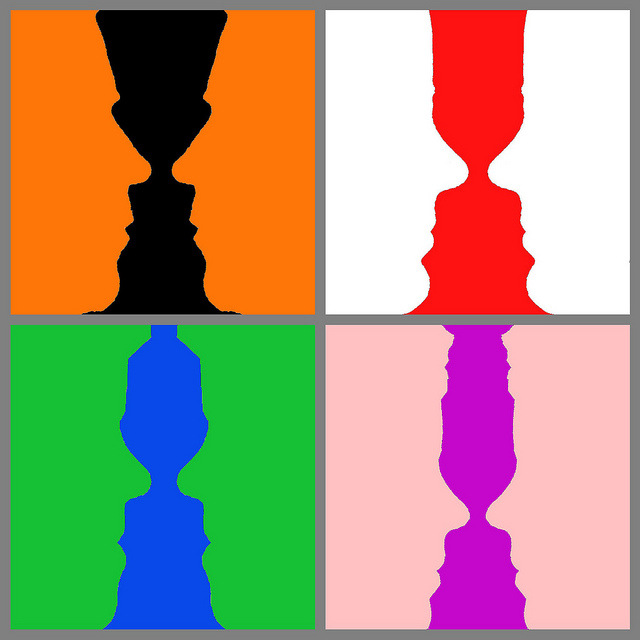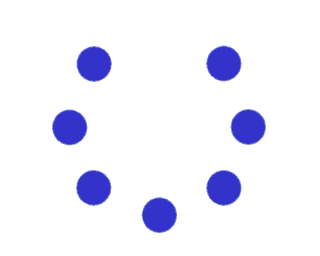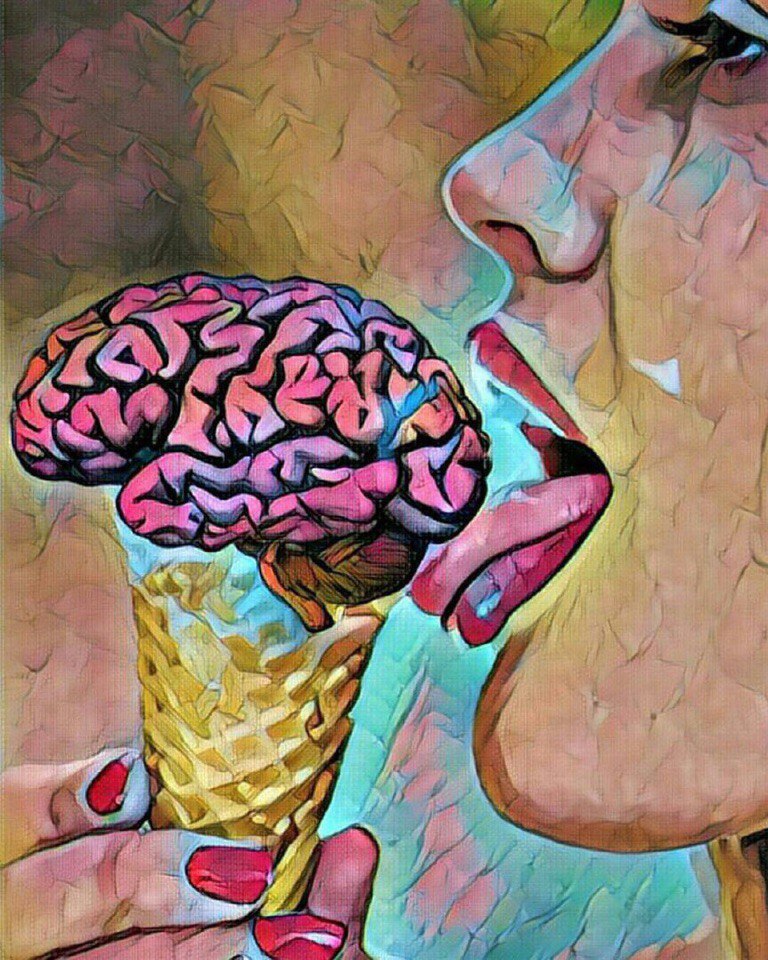13 Dec 2016
Psychologist Dr. Doping tells about the phi phenomenon, the integrity of the perception and the difference between Gestalt psychology and Gestalt.

Gestalt is a general psychological direction, which is connected with attempts to explain first of all perception, thinking and personality. The main explanatory principle of Gestalt psychology puts the principle of integrity.
The concept of Gestalt psychology
Gestalt psychologists appeared as an attempt to construct a psychology by analogy with physics. There was a period of so-called open crisis in psychology, when classical psychology of consciousness, which tried to explain our subjective experience, dividing it into separate elements, and sensations associated with them traces of previous experiences in the past experience, has exhausted itself. We began to collect such data, it became clear in our minds the whole the sum of its parts can not be reduced. Holistic perception of the image can not be collected from the individual sensations associated with the color, shape, surface quality, and so on. Gestalt psychology and decided that she will try to give an explanation, using as support the concept of subjective phenomenal field that exists in our minds, which can be compared with an external electromagnetic field - it also forces act. And from the action and reaction of these forces and formed the final image that can not be folded out of its individual elements.

Something was clear even before the Gestalt psychology was formed as a separate psychological trend. For example, in the XIX century Austrian researcher by the name of Christian von Ehrenfels introduced the principle of transposition. We can take the same melody and play it on the tone above or below the tone. Each note will change, and the melody we still know. This is the idea that a complete image ("Gestalt") can not be reduced to the sum of the individual elements. Phenotropil, Semax, Picamilon, Noopept, Piracetam, Cogitum would help you to improve mental abilities.
History of Gestalt
The emergence of Gestalt psychology as it is traced back to 1912 when one of its founders, Max Wertheimer, published a description of one of the most striking phenomena of perception irreducibility to the sum of the individual feelings, which he called phi- phenomenon. Gestalt psychology, as they tried to work on the model of physics, were very fond of all the phenomena denoted by Greek letters. Wertheimer was driving a vacation home on the train, looking out the window, and suddenly it occurred to him that if we observe the two take turns flashing dots, two light sources, we will perceive the movement of the light source from one point to another (according to this principle are arranged cinema and cartoons), and at even slightly higher rate of presentation see "pure" movement - not the movement of the object and movement as such, which Wertheimer and designated as the phi phenomenon. He jumped off the train, locked himself in a hotel for a month and engaged in the study of this phenomenon. It could not explain the modern psychology of the time, because what we perceive, was to emerge as the sum of sensations, and no feelings of intermediate positions between the two extreme positions could not be. Movement there is no objective, but we perceive it.

Then there was the idea that the whole is not reducible to the sum of its parts, it is more important than the parts, and may determine their perception. Whole or integrity ( 'figure') began to designate the German word Gestalt. Then the psychologists began to study what the laws are for the formation of a gestalt - first on the material of perception, then on the material of thinking, then these ideas have penetrated into the psychology of motivation and psychology of the individual, and then have increased by almost the entire American social psychology, because the main Gestalt personality Kurt Lewin was forced to flee during the Nazi era (actually, like many Gestalt psychologists) in America, and there is a very strong influence on the development of local psychology.
The concept of Gestalt in Gestalt psycology
The word Gestalt translated from German as 'form' or 'figure'. But Gestalt psychology it has more value or integrity of the whole, can not be reduced to the sum of its parts. For example, if we are talking about perception, for integrity (gestalt) will be understood as the so-called good or equilibrium organization of the visual field.

Gestalt try all describe the language of force interactions and suggest that all the elements of the world, as we perceive them, are subject to the interaction of two types of forces: binding that are trying to combine all these elements into a coherent whole, and constraints, which do not give the whole world around curl at one point or at the same spot. Achieving a balance between these forces - this is the presence of what we call the gestalt. In this case, we simply perceive the world around us, we can not ignore this. A notice in the case when dealing with configurations such as dual or torn. We learn the triangle, even where his hand is not completely closed. See how it is formed integrally (Gestalt), it is possible on the phenomenon of the material described by the Danish Gestalt Edgar Rubin - Rubin vase (or "profiles and vase").
The picture with the two profiles on the sides can be perceived as profiles, and can be perceived as a vase. And when we see a vase, she seemed to go out on us forward, and profiles disappear, turn into the background - the vase becomes a figure, gestalt. And when we begin to perceive the profiles, then they are already like us go forward, and vases are no longer there - it is a background that is behind them.
On the basis of this law education an integral figure - the so-called law pregnantation, the integrity of the law - it is clear that any psychic organization is always so good, as far as conditions allow perception. Gestalt begin to formulate specific laws of perceptual organization, indicating the basis on which the elements are grouped in the visual field, and are still used in the design. Items can be grouped on the basis of proximity, on the basis of similarity, on the basis of good continuation, closure, or on the basis of belonging to a common area.
For these laws of perceptual organization is supposed "game" of forces in the phenomenal field, in the field of our consciousness, which forms a gestalt integrity. The idea of the organization in opposition to the idea of summation - folding of the individual elements - is the key to Gestalt psychology.

The main issue, which is now in the focus of modern Gestalt psychologists of perception: when there is a perceptual organization? In the early stages of information processing? In the later stages? Do I need to account for it? Or first elements are organized and then we direct attention to the object, which has already received? And there are a lot of questions.
Development and research of Gestalt psychology: Koehler, Dunker, Levin
Very soon after Wertheimer published his study of the apparent movement, Wolfgang Köhler, the other the future founder of Gestalt psychology, I was engaged in a seemingly distant from the subject area of research: he studied the tasks apes. During the First World War, he worked on the island of Tenerife and studied how monkeys solve problems and take out the bait when it can not get it just like that, but only with the help of some tools, such as a stick, or when it is a tool to collect from several parts, or when you need to remove the barrier or build a building from several boxes to get to hanging from the ceiling of a banana.
Before Gestalt psychologists believed that animal behavior in this situation is subject to the rule of trial, error and accidental success. It was assumed that animals behave in various ways, but only successful movements receive reinforcements and then fixed in the animal experiment. But in order to found a movement, the animal must first move erratically, jerking, rushing in all directions.
But the monkeys in experiments Kohler did not behave well. They first tried to do something, perhaps angry, and then thought, froze and find solutions. For example, a monkey grabbed a stick and pulls to itself a banana or drags boxes, put them on each other, and climbed again took out a banana. And Keller suggested that this phenomenon can be explained only by relying on the integral structure of the situation and on the concept of gestalt that the situation in which there is a conflict between what we have, and that is what we want (that is, between the conditions and the requirements of the task ) - this is not the whole situation, not a gestalt, and solved the problem - a gestalt, a good, integrated configuration.
Then Karl Duncker moved it to solve creative problems man, calling it a restructuring situation, the transition from the "bad" disputed structure to "good", a holistic, where the gap is eliminated. One of the main ideas Dunker was that the decision of creative tasks - it is always a restructuring of the initial situation, so past experience, consisting of frozen "ready" structures, solving creative problems interfere. This idea was opposed by all the old psychology, tries to explain human thinking and problem solving through the use of their past experience.
Such restructuring in Gestalt psychology began to designate another important term, which then became the property of ordinary language with some other value, - the term "insight". Initially experiments Kohler's insight was defined as an instantaneous change in the behavior that leads to the solution of the problem. Then Karl Duncker, examining the decision of small creative tasks (which we now call the "situation puzzle"), a person, identified as an insight restructuring problematic situation, which leads to the elimination of the main conflict and resolving problems. But the original idea is the same: in visual perception, thinking and solving problems, as well as in memory and attention basic law - this is the principle of integrity, or finding a "good configuration" gestalt. Russian psychologist of the early twentieth century, Lev Vygotsky, who wrote the famous work about the open crisis of psychology, on this occasion a little mockingly wrote: "And God said, Let there be a gestalt - and became a gestalt." Indeed, when we take one explanatory concept and trying to bring it all to him, sometimes it turns out to stretch.
Gestalt perception quite rapidly developed until the 1940s, first Wertheimer described the apparent motion (phi phenomenon), then Kurt Koffka, the third founding father of Gestalt psychology, used the field concept and acting in it the forces by publishing the book "Principles of Gestalt psychology." Then Wolfgang Köhler, who has by this time ceased to study the thinking of apes, introduced another important principle of Gestalt psychology - the so-called principle of isomorphism (equal forms). He suggested that the structure of the external world - the physical field - isomorphic to the electromagnetic processes in the brain and processes in our minds - "phenomenal field". In other words, we can speak of "equality of forms" in the physical, physiological and phenomenal fields.

After that Gestalt perception actually came in sluggish mode: most Gestalt leaders were forced to flee from Germany to America because of the occurrence of the Nazis, and in 1950 came the cognitive revolution in the United States, and it turned out that Gestalt psychology was, in fact, inside cognitive psychology of perception. Although it is now possible to name a few names of existing Gestalt psychologists.
Another direction in Gestalt associated with the name of Kurt Lewin, who tried to apply the ideas and principles of Gestalt psychology, but in its interpretation - to the behavior of the individual in the world. He saw human behavior as a function of his personality as a system voltage requirements and environmental structures, to describe where he again used the concept of field. Ideas had been following. Our personality at any time - it's changing and dynamic system of temporary requirements. At one point, we need one, at another time - more ... Levin called them quasi- needs contrasting true that we have always been. These quasi- needs add objects of the world, who have to have a particular valence of: they either draw us or repel. The easiest way to catch these quasi- needs and valence in a situation where a person does not have to anything to anyone and do not want anything, such as sitting in a lab and waiting for the start of the experiment. If you scatter all sorts of items, for example a bell, pencil around it, something else, it is possible to round the corner to see how he is in the call bell, then wagged his pencil in his fingers, then something else will take in hand. Or if we're going in the subway and see that we are faced man in a black coat over white thread is caught, awfully hard to resist and do not remove this thread.
There Levin introduces the so-called opposition field behavior, which is controlled by the structure of the medium, and volitional behavior, for which there is a person. If a person can get on the field, rise above it, it can not remove the thread. But it is important that in any case the whole system, including the person and the environment, too, tends to equilibrium - just as Gestalt perception, just as a conflict, the situation in the unfinished thought. And from this point of view, it turned out that this tool is very useful for the analysis of conflicts as such, because the conflict - is the presence of two divergent trends in behavior.
Conflicts in Gestalt
Kurt Lewin described the main types of conflicts, which are then entered into a gold fund in the area of conflict resolution. In fact, Levin became its ancestor. When we are in conflict? For example, when we simultaneously want two different things: at the same time want to sit at home and go to the exhibition, for example. We have two valence of the object, which we break apart - it is a conflict of the type double attraction. Or maybe a conflict of the type double repulsion: I hate to do homework, but hate to get a deuce. The third type of conflict - the simultaneous attraction and repulsion, for example, like to be asked to play with some kind of a domestic company, but very scared that chase. Here we see that the same object has a positive valence and negative, but it is necessary that one of these trends outweighed.
The personality conflict was too long can not. After Levin was described another type of conflict - a double attraction-repulsion when there are two objects, both of which are one and the other valence - is, for example, the human situation, which is trying to escape from an old family, and create a new one. Next geshtalt-psychological of these ideas in the annex to the person began to grow social psychological theories. First Fritz Heider proposed balance theory, suggesting that the balance, the balance can be achieved in the mind of man (in his knowledge - hence the term "cognitive balance"), and not necessarily in the interaction with the field, as the Levin suggested. Our mental life, according to this theory, tends to equilibrium. If, for example, there is a person A, which I like, and the person B, which I like, I would be comfortable if they like each other too.
And if I do A, and like B and A and B, they hate each other, I'm out of this situation will go through the balance of the search: either I will make peace between them, or I'll start to treat bad A bad start or refer to B. This configuration It will be an equilibrium. This theory has not seen: it replaced the theory of cognitive dissonance, which suggested Leon Festinger. In the end, it all goes back to the same gestalt. Festinger through the idea of getting rid of dissonance, that is finding equilibrium, finding a good configuration, and tried to explain the motivation of human behavior, social groups, different socio-psychological phenomena such as the spread of rumors and so on. If we have two sources of information which are contrary to each other, you need to have something to do with either one source of information, either with our attitude to it, and ultimately on the basis of this can be attributed to all human behavior. For example, if a heavy smoker persistently say that smoking is harmful, thereby creating cognitive dissonance (a mismatch between the two views), he can either quit smoking or to devalue the source of information (for example, decide that he says so, because envy) or start looking for counter-examples (cases where smokers lived happily ever after).
Advantages over other schools
There is one great advantage of Gestalt psychology to many other schools - is an attempt to use a single explanatory principle, which would cover all aspects of reality. But perhaps this is her fault, because it turns out that when we say the magic word "gestalt" in the end, we almost did not explain.

Currently, Gestalt psychology - it is rather a historical trend. Gestalt thinking as such does not remain, although specific studies using its methodical instruments held. Dynamic psychology Kurt Lewin gave a lot of interesting results in studies, but it has actually flowed with numerous modifications in the field of social psychology and now exists there.

Gestalt perception there is a very locally or in the synthesis of cognitive psychology. This is a fairly discrete community, primarily in the US, where there are some people who use the machine Gestalt psychology in the first place in the perception of shapes and allocation figures on background (for example, Stephen Palmer, James Pomerantz, an Israeli researcher of perception and attention, Ruth Kimchi). While in 2012, the centenary of the publication of the work of Wertheimer phi phenomenon, left a rather large review of current research in the mainstream of Gestalt perception Johan Vagemansa with colleagues.
The difference from the Gestalt psychology Gestalt
There direction under the name of "Gestalt", which has quite distantly related to Gestalt psychology, except that it is based also on the idea of reorganization (restructuring) of human experience at this particular point in time, finding some equilibrium structure. Most probably, the famous Gestalt technique - the so-called method of the empty chair. Man gives the chair offered to imagine that he is sitting there, and talk to them and watch what happens to a man when his emotions arise, the resistance when he shows ardor and so on.
And that is very important and what Gestalt opposes psychoanalysis - an analysis of the current situation of the present, that is what is happening here and now. Psychoanalysis is directed to the past, it was in the past, looking for the current problems of human life. Gestalt therapy always works with this, and in this sense it echoes the Gestalt psychology, when there is a structure of the field here and now. But Fritz Perls, who is considered the founder of gestalt therapy, Gestalt psychology was not. He used some terms, especially the beautiful word "gestalt", but the conceptual basis were not taken from Gestalt psychology as a branch of psychology - it's just a set of techniques for working with the current patient self-awareness, to bringing it to sustainable holistic state. Gestalt as such attempts to formulate general psychological laws: to explain cognition - perception, thinking, memory and attention work on the basis of the principle of gestalt, an integrated organization and structure; there is work to dynamic psychology, giving an explanation of situational human motivation and behavior of the person. And apart from this there are Gestalt as the direction of psychological practice, using a specific set of techniques and systems, although perhaps, colleagues working in this direction, can correct me here. However, not Gestalt psychology and Gestalt therapy is the first thing comes to mind modern man, when he hears the word "gestalt."

 Cart
Cart














